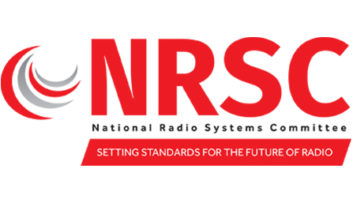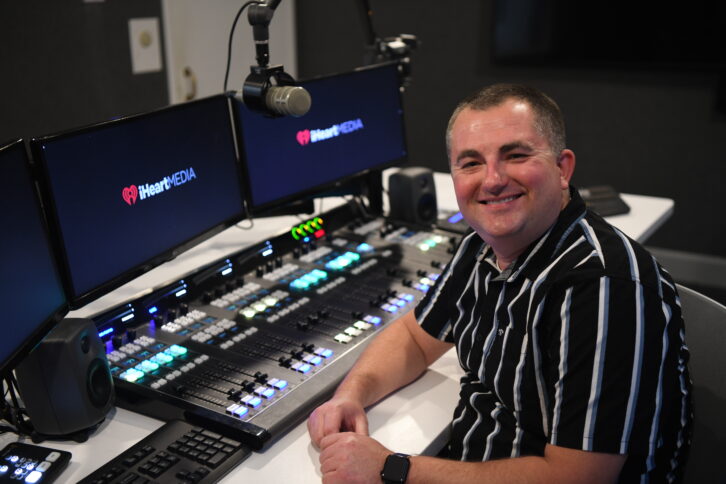
Alan Jurison is the recipient of the 2024 Radio World Excellence in Engineering Award.
Honorees represent the highest ideals of the U.S. radio broadcast engineering profession and reflect those ideals through contributions to the industry.
We’re saluting Alan for his work in deploying and advancing HD Radio services over the years, both for his employer and for the industry at large; for his contributions to the National Radio Systems Committee, including projects like helping stations insert local EAS alerts onto HD Radio subchannels; for his efforts to educate the industry about RDS and HD Radio metadata and the importance of high-quality, consistent metadata displays; for his involvement with the SBE; and for his advocacy for engineering education and awareness of issues like virtualization, the cloud and the evolving radio air chain.
Jurison, 44, is senior operations engineer for the Technical Operations group at iHeartMedia, reporting to Jeff Littlejohn. He started in radio at age 15 with Pilot Communications and worked for years at Citadel Broadcasting before joining iHeartMedia in 2012. He is based in Syracuse, N.Y.
We spoke with him about his work and career.
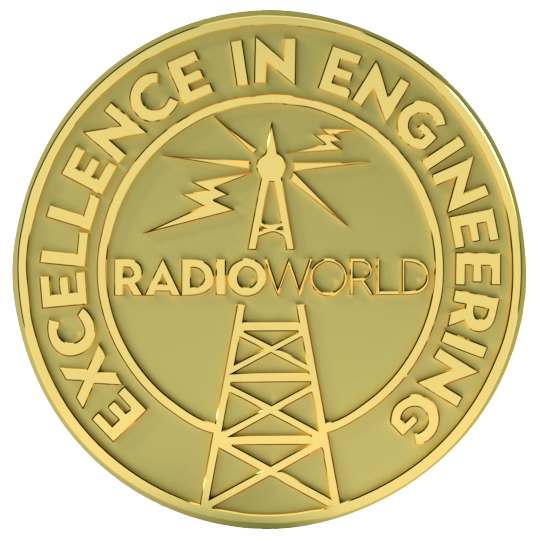
Radio World: Describe your responsibilities and current role.
Alan Jurison: I’m the company’s lead on HD Radio, RDS and metadata services, making sure we’re providing the best experience for our listeners and customers.
Everyone thinks of HD Radio in terms of its audio channels but there’s all the data behind it too, the metadata services that provide title and artist, album art, station logos, and the data we send over HD stations to feed in-vehicle car navigation systems with traffic and weather information. iHeartMedia brought me on to help build that system and make sure our automotive customers, the OEMs, were happy with the data. Now the job is about making sure it is reliable and well maintained.
The RDS aspect is mostly fully developed now, but we maintain it, make sure it works and that systems are updated. There’s also streaming metadata, making sure the app looks okay. Teams write the code and handle the app development, but that data has to come from somewhere, so we have people and systems in-place to make sure that is managed well.
And then there are emerging hybrid radio platforms like RadioDNS and DTS AutoStage. You’re starting to see vehicles that have it, and there will be more in the future, which is exciting. If something doesn’t quite look right, we figure out whether the problem is on our side, with the source data, or with an implementation on the receiver side.
We’ve worked over the past 10 to 12 years with Xperi and industry partners like GatesAir, Nautel, Inovonics and WorldCast to make sure equipment that we and other broadcasters buy support metadata. These companies take feedback, from me and many others, combine it with their own great ideas and put these best practices into products people can buy to manage metadata and make sure their stations provide the best experience.
RW: You’ve been an advocate of getting metadata right. But in your job, you wouldn’t necessarily have to be so vocal. You could choose to focus on it for iHeartMedia while letting other companies worry about it for themselves. But by working with vendors, it helps other companies too.
Jurison: I work with various manufacturers as well as Xperi, and I give them lots of ideas. Sometimes these are iHeartMedia-specific but we try to think globally, because it doesn’t really benefit anyone to make a bunch of special devices or software that only one company can use. And we want to keep costs down for ourselves as well as the rest of the industry. There’s a lot of R&D that goes into these products.
I started putting RDS on stations at Citadel in 2002 or so, it was a pet project of mine. I believed that displays in the car were going to evolve and get more immersive. I discovered some best practices on how to use RDS, and worked with software developer Victor Capton to develop what would become Citadel’s metadata solution.
These best practices were often developed through research on RDS standards, but also trial and error. I remember going around the office asking to borrow the keys of staff members at the radio station when they got a new car to look at how the metadata implementations were similar, or different.
Some of the first articles I wrote in Radio World were related to those efforts. “Hey, there’s this new car that can show you all 64 characters of RDS all at once, not chunked in those little eight-character blocks! You’ll be able to see the whole message!”
This was around 2008, in one of the first iterations of modern infotainment systems. But I still feel like we’re in its infancy. Just imagine, when people don’t have to actually drive the car, how immersive these things will be.
You still see stations that don’t understand how important it is to look good visually in the dash. We’re working with vendors to make it easier for smaller broadcasters. There’s a lot yet to come that will help a smaller station deploy metadata services.
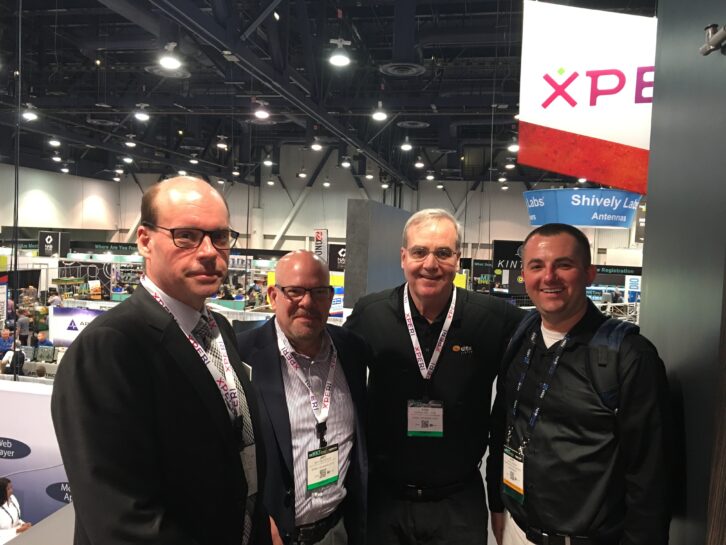
RW: Will the introduction of hybrid platforms expand the gap between the “haves” and the “have nots,” to the detriment of stations that don’t engage with metadata?
Jurison: It ends up becoming their business decision. But to date, HD Radio, streaming and RDS are all optional systems. Participating with them is voluntary. If you’re a smaller station or group, maybe you can’t afford all of the wizardry. As we move more into the software-developed world, it becomes less necessary to buy additional hardware to get these functions.
This is the next evolution over five to 10 years in broadcasting. The computer in a transmitter you buy will do almost everything. Such solutions aren’t quite realized in the marketplace yet, but where we’re going as an industry is pretty exciting.
I look at Nautel’s recent announcement with its GV2, which integrates audio processing, RDS and HD Radio alignment into the transmitter. That’s pretty powerful. And while that might only be offered in a flagship product, eventually this approach will work its way into lower power levels. Other manufacturers are working in this direction as well.
That kind of thing will be compelling for smaller broadcasters, who will buy the transmitter they plan to buy anyway and get these features too.
RW: You do a lot of work with the National Radio Systems Committee and the NAB Radio Technical Committee.
Jurison: Lately I’ve been involved with the NABRTC’s work with Nielsen on software-based PPM SDK encoding — encouraging them to develop those tools and working with the manufacturers to implement it. This wasn’t a very hard sell, but those conversations needed to happen. Jason Ornellas of Bonneville was the point person.
With the RTC it’s nice to be working among industry peers. We all have the same kind of problems; so how can we solve them, working with a Nielsen or hardware manufacturer or a group of manufacturers on our common challenges?
By the same process we’re moving towards a software-based EAS ecosystem. Those conversations are in their infancy, while we’re trying to get buy-in and feedback from the FCC and others, but the initial conversations seem pretty good.
We have to consider questions like, “The EAS system we’ve had for 30 years has worked pretty well, so why is moving it to software advantageous?” And examine questions about security and redundancy.
In the long term, a software-based EAS model, as we’re envisioning it, could be more resilient than the system we have today. Currently, at most stations, EAS is just one hardware device. But if it’s all in software, we would have multiple instances at a variety of places — at the studio, at transmitter sites, at the backup transmitter site.
Today, if that one box fails, EAS is out of service for 60 days on a station. With software, you could resolve it immediately. Future changes to EAS become much easier in a secure software-defined environment. So we’re working with the FCC and with FEMA/IPAWS. They seem open broadly to the concept but we haven’t gotten into nitty gritty details yet. I think they’re still processing the benefits and weighing comments from others.
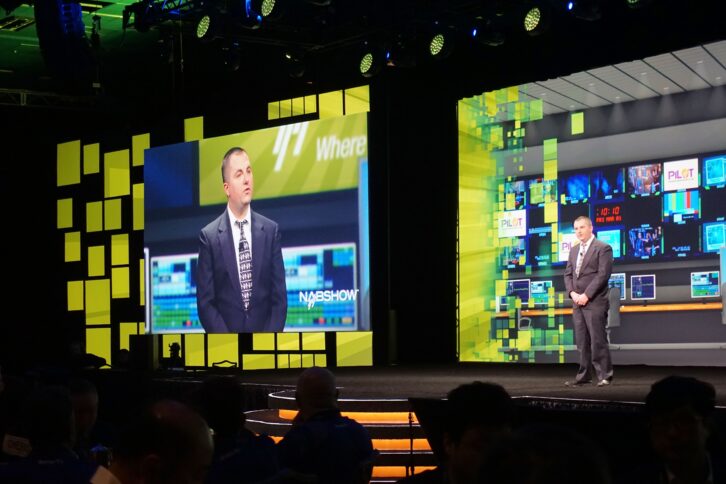
RW: How did you develop interest in radio technology?
Jurison: I got a computer when I was in first grade. And growing up, I was listening to the radio all the time. We didn’t stream audio back then.
We moved from Pittsburgh to Syracuse when I was 12. I was one of those people who’d call WNTQ, the local radio station. I would bother the nighttime DJ, Rob Wagman. Finally one day I asked if I could come in for a tour. It was really cool. And one of the first things I noticed was that to prepare their nightly feature “The Top Nine at 9,” they were taking phone calls all day using a piece of paper and pen, tallying requests of what to play.
I thought that seemed inefficient, so I wrote a DOS program that tallied up the requests for them. I came back the next week with the program — of course, it was on a floppy drive — and they started using it. I think they were still using it when I left the company 17 years later.
The station was owned by Osborn Communications. Shortly thereafter, the 1996 Telecom Act came around and Jim Leven of Pilot Communications bought the station.
I became an intern for a bit and then did technical work with computers, and my role expanded.
When I started, there were maybe four computers at the entire station — for the business manager, the program director, the receptionist and for commercial traffic. Then they decided to put a computer in the studio. Automation became a thing. I remember thinking that someone had to figure out how to get them all to talk to each other.
Of course, computer automation wasn’t nearly as reliable as it is today. And you couldn’t just go out and buy a refined server-grade Dell or Lenovo to run it, either. These were all homebrew PCs. But I’d been doing that kind of stuff at home on my own already, so it was second nature to me. Getting all that to work, teaching the staff how to use it, was really fun.
Then we merged and became more stations, we moved and consolidated. That’s when I got out of my IT world and started learning radio engineering, helping take apart studios and moving them, building studios from the ground up. When you tear apart everything and have to make it work again, that’s when you learn.
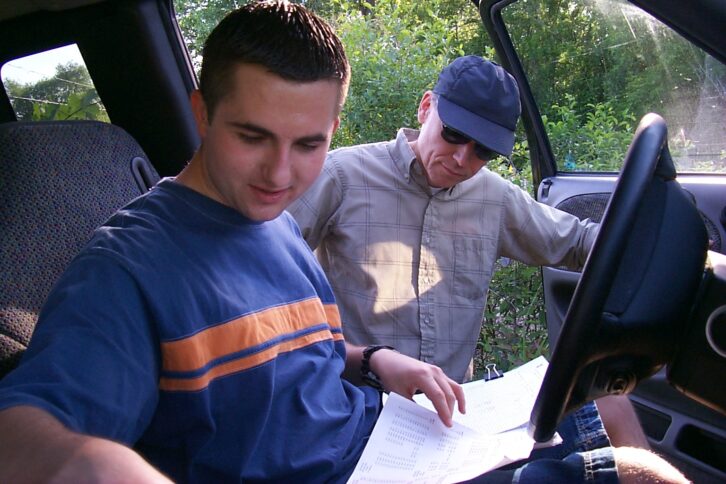
RW: Did you have mentors?
Jurison: Dave Edwards was the director of engineering and knew a ton about RF, audio and the industry, while I knew about computers and networking. We bonded, and he taught me how to wire up a studio and fix a transmitter. He still works at Cumulus in Syracuse.
Later, Barry Thomas noticed that I was writing articles for Radio World about the newer infotainment systems and optimizing RDS. He was involved with the National Radio Systems Committee and chaired it for a time, and he invited me to come to a meeting.
That’s where I got to know David Layer of NAB and many other colleagues and peers who shared best practices and ideas. Then the idea came about to put together an NRSC guideline on best practices for RDS, and that’s what we did, going back to the original Radio World articles I’d written and building on that. The new guideline was to become NRSC-G300. It wasn’t written by one person, it reflects the contributions of dozens of people.
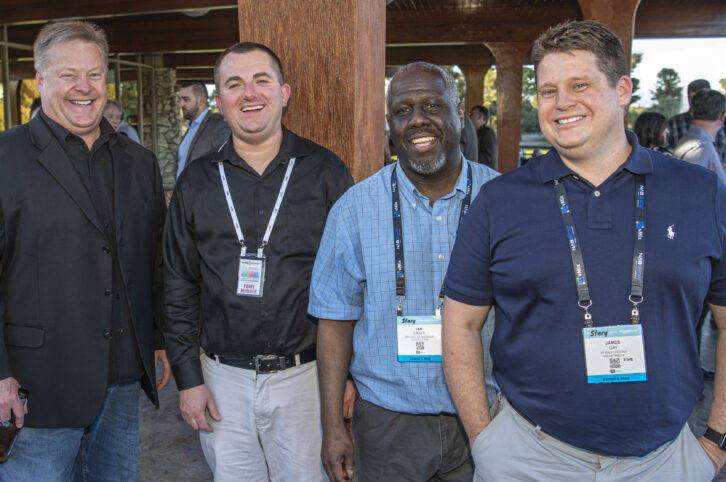
RW: Then iHeartMedia brought you over from Citadel.
Jurison: In 2012, iHeartMedia’s Total Traffic and Weather Network created a nationwide service for delivering information for display in vehicles via HD Radio. I was hired to ensure the quality and reliability of the HD Radio and RDS delivery networks, and to focus on improving the experience of listeners by helping to add and improve metadata, album art and station logos.
The work required not only software development on our end, but also replacing HD Radio encoding hardware on 400 stations in a very short timeframe. We were essentially on Gen 2 of HD Radio at the time in most of the country. We were moving to a consolidated Gen 3 platform so we could deliver the services we do now through HD Radio. We started in 2012 and over a year or so we ramped these services up. We needed to prepare to deliver data services for our biggest client, Toyota Lexus.
Jeff Littlejohn and Rob Speicher were instrumental mentors getting me set up quickly in my role here at iHeartMedia, to learn the new company, to make the introductions and inform my interactions with internal and external colleagues at Xperi and Toyota on the project. With contributions from others, we assembled a solution recognized by the OEMs and that won the Telematics Update Best Navigation Solution award for 2012–2013. Over a decade later, the product is still recognized as a best-in-class solution and in use today.
RW: Is there a technical challenge today across the industry that you feel engineers should be thinking about?
Jurison: The software-defined air chain — moving more processes from physical widgets into a larger system that consolidate different broadcast functions. This is not a one-year thing, it’s a five-year thing, at least. We mentioned PPM encoding in the audio processor, and EAS. Manufacturers have been absorbing these ideas and building products that consolidate these functions to simplify the air chain.
The other thing is making sure that stations take steps to provide really good listening experiences — not just how good the station sounds but the whole enriched experience with the metadata.
And to make sure it looks good in a variety of vehicles, not just one. People become myopic about their metadata because they have one car where they look at it, but not every car is designed the same way. We should always consider our metadata use across a variety of different radio implementations and platforms. While I no longer borrow the keys of staff to play with their in-dash vehicles, I do make it a point to rent and observe the industry’s metadata in new vehicles often.
More on Alan
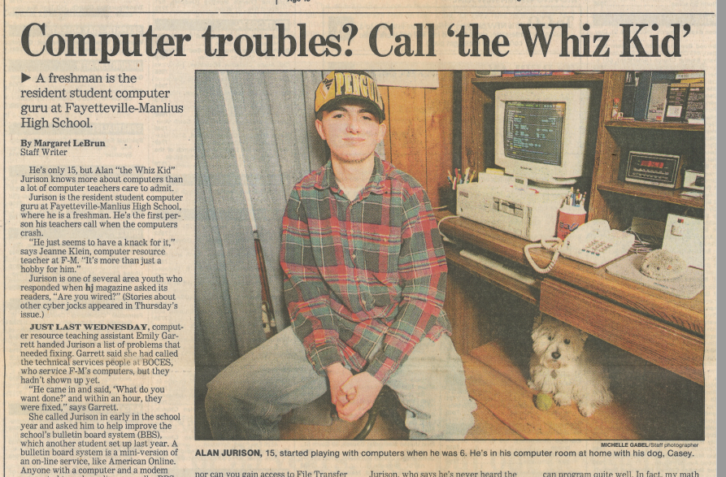
Alan Jurison started at age 15 with Pilot Communications in Syracuse, N.Y., where he developed the technical aspects of the industry’s first remote voice-tracking for stations in distant cities. The local newspaper clipping shown here is from 1995.
He graduated with a B.S. in information management and technology from Syracuse University and was promoted to regional information systems manager and broadcast engineer for Citadel Broadcasting. He led many IT and engineering projects for the company. He played roles in transitioning IT systems in the acquisition of ABC Radio/ABC Radio Network at Citadel in 2007 and assisted with IT transitions after the Cumulus acquisition of Citadel in 2011.
“What always impressed me about Alan was that he was able to come up with solutions to engineering and IT projects that many times were completely out of the box,” said Dave Edwards, who is now with the Cumulus Radio Station Group in Syracuse.
“He was always very generous with his time and never failed to help his fellow co-workers navigate the newly unfolding world of computers and networking. I fall back on the things I learned from him to this day.”
Dave Marchette, former CTO of Citadel Broadcasting, said that even as a young engineer barely old enough to vote, Jurison was “a superstar junior, a diamond in the rough. Enthusiastically analytical with an ability to think way outside the box, he possessed a wide, deep knowledge set especially rare for a young engineer. But his real superpower was his laser focus.”
Marchette recalls a time when Citadel was transitioning to computer-based playback and automation. “The backbone upon which this was accomplished was a large Windows Active Directory domain that spanned the country. Deploying this piece of infrastructure into a mission-critical high-uptime environment was an important task, one that he led valiantly. Using advanced scripting techniques and a ‘security first’ approach, Alan’s team helped us build a scalable and secure platform that had literally 100% uptime for well over a decade.”
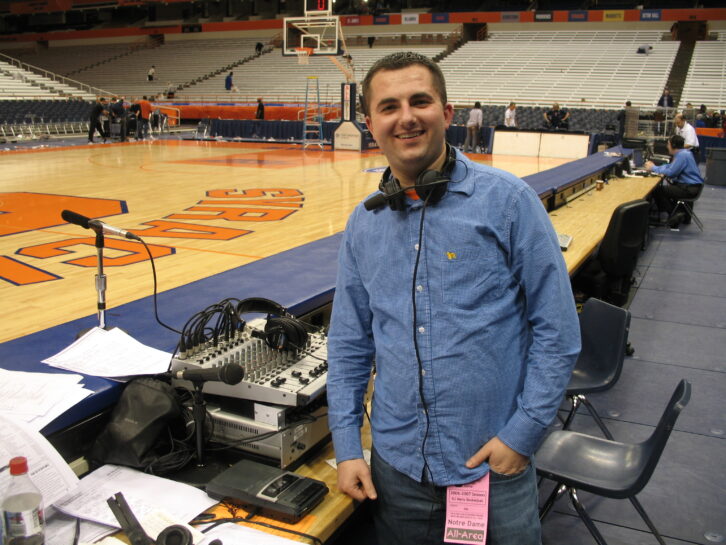
In 2012, Jurison joined iHeartMedia as a senior operations engineer for the corporate Technical Operations group.
“Alan’s in-depth knowledge, attention to detail and continuous drive for improvement, have resulted in a greatly improved listener and advertiser experience,” said Jeff Littlejohn, executive vice president, engineering and systems integration.
“I think it is safe to say that Alan is one of the most knowledgeable experts in the field of HD Radio. His involvement in industry groups have elevated the reliability of HD Radio for all.”
Littlejohn too commented on Jurison’s focus and attention to detail. “He takes the time to dive into the minutiae and figure out the how and why of a problem and then works diligently to get the issue resolved. Alan builds relationships, seeks information from others, and freely shares his own knowledge.”
Meanwhile for more than a decade Jurison also chaired the NRSC’s Metadata Usage Working Group, and in 2022 he became chair of its IBOC Standards Development Working Group. He also serves on the NAB Radio Technology Committee and co-authored a chapter in the 11th edition of the NAB Engineering Handbook.
He is a member of the Society of Broadcast Engineers and holds several certifications, including Certified Professional Broadcast Engineer, AM Directional Specialist, Digital Radio Broadcast and Broadcast Networking Engineer.
OUR EXCELLENCE HONOR ROLL
2004 Andy Andreson
2005 Mike Starling
2006 John Lyons
2007 Clay Freinwald
2008 Jeff Littlejohn
2009 Gary Kline
2010 Milford Smith
2011 Barry Thomas
2012 Paul Brenner
2013 Marty Garrison
2014 Wayne Pecena
2015 David H. Layer
2016–17 Michael Cooney
2017–18 Larry Wilkins
2018–19 Russ Mundschenk
2019–20 Dave Kolesar
2020–21 Jason Ornellas
2021–22 Roz Clark
2023 Steve Shultis
2024 Alan Jurison





